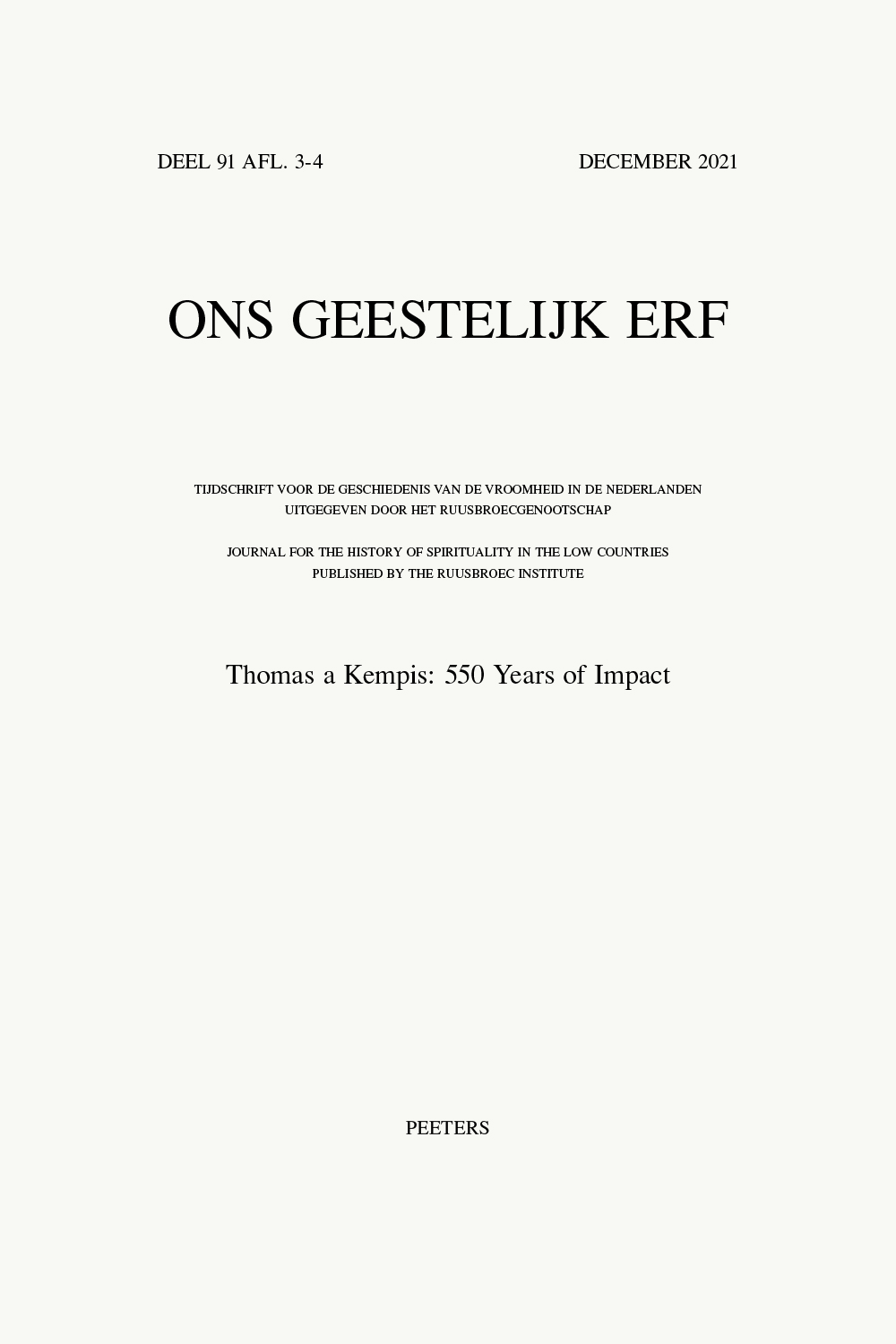 previous article in this issue previous article in this issue | next article in this issue  |

|
Document Details : Title: Verbondenheid verbeeld Subtitle: Over de uitbeelding van een rozenkranssnoer op een schilderij van de Meester van Sint-Goedele Author(s): KRAMER, Bernadette Journal: Ons Geestelijk Erf Volume: 82 Issue: 2 Date: juni 2011 Pages: 136-160 DOI: 10.2143/OGE.82.2.2071238 Abstract : An unusual game with a rosary is depicted in a painting by the Master of St Gudula, dating from c. 1480, entitled Mary and Child with the Patron and Mary Magdalene. Jesus is portrayed being held closely by Mary, while he sits on her lap straining to grasp the patron’s rosary. The picture thus poses an intriguing riddle – how can a concrete item taken from the tangible world of the believer bridge the divide with the spiritual world in such a manner, erasing the boundary between them and being present for both of them simultaneously? In this article I try to demonstrate how this act provides insight into how the late mediaeval faithful perceived the rosary. The painting also shows ways in which this perception could be portrayed in art contemporary to it. To this end, I first compare the painting with a number of contemporary works where a relationship between the concrete-tangible and the metaphysical-spiritual also arises. Works included are the centre panel of the Columba Altar by Rogier van der Weyden, the Diptych of Martin van Nieuwenhove by Hans Memling and the Baptism of Christ Triptych by Gerard David. Although there are one or more similarities between the various paintings and the Master of St Gudula’s work, in all instances the close and immediate bond that so characterizes the Master’s painting is lacking. I will subsequently discuss the rosary prayer and the rosary itself as an aid in prayer. Comprehending the meaning and perception of the rosary will contribute greatly to our understanding of its depiction by the Gudula Master. |
|
